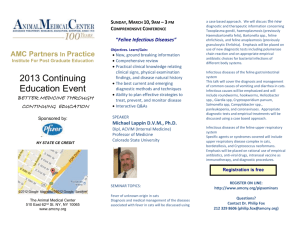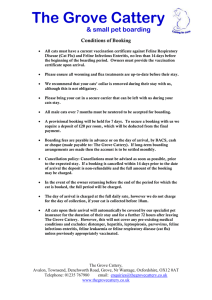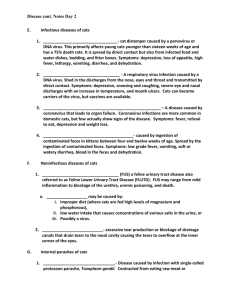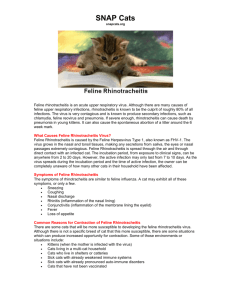Clark County State Veterinarian Office Letter
advertisement
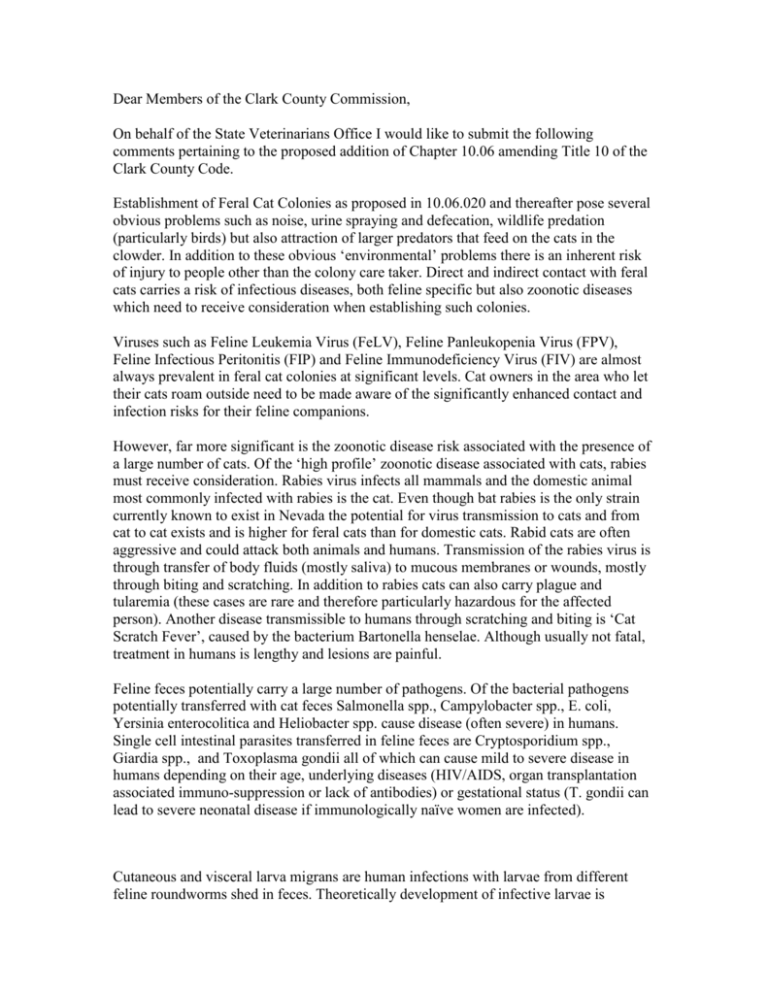
Dear Members of the Clark County Commission, On behalf of the State Veterinarians Office I would like to submit the following comments pertaining to the proposed addition of Chapter 10.06 amending Title 10 of the Clark County Code. Establishment of Feral Cat Colonies as proposed in 10.06.020 and thereafter pose several obvious problems such as noise, urine spraying and defecation, wildlife predation (particularly birds) but also attraction of larger predators that feed on the cats in the clowder. In addition to these obvious ‘environmental’ problems there is an inherent risk of injury to people other than the colony care taker. Direct and indirect contact with feral cats carries a risk of infectious diseases, both feline specific but also zoonotic diseases which need to receive consideration when establishing such colonies. Viruses such as Feline Leukemia Virus (FeLV), Feline Panleukopenia Virus (FPV), Feline Infectious Peritonitis (FIP) and Feline Immunodeficiency Virus (FIV) are almost always prevalent in feral cat colonies at significant levels. Cat owners in the area who let their cats roam outside need to be made aware of the significantly enhanced contact and infection risks for their feline companions. However, far more significant is the zoonotic disease risk associated with the presence of a large number of cats. Of the ‘high profile’ zoonotic disease associated with cats, rabies must receive consideration. Rabies virus infects all mammals and the domestic animal most commonly infected with rabies is the cat. Even though bat rabies is the only strain currently known to exist in Nevada the potential for virus transmission to cats and from cat to cat exists and is higher for feral cats than for domestic cats. Rabid cats are often aggressive and could attack both animals and humans. Transmission of the rabies virus is through transfer of body fluids (mostly saliva) to mucous membranes or wounds, mostly through biting and scratching. In addition to rabies cats can also carry plague and tularemia (these cases are rare and therefore particularly hazardous for the affected person). Another disease transmissible to humans through scratching and biting is ‘Cat Scratch Fever’, caused by the bacterium Bartonella henselae. Although usually not fatal, treatment in humans is lengthy and lesions are painful. Feline feces potentially carry a large number of pathogens. Of the bacterial pathogens potentially transferred with cat feces Salmonella spp., Campylobacter spp., E. coli, Yersinia enterocolitica and Heliobacter spp. cause disease (often severe) in humans. Single cell intestinal parasites transferred in feline feces are Cryptosporidium spp., Giardia spp., and Toxoplasma gondii all of which can cause mild to severe disease in humans depending on their age, underlying diseases (HIV/AIDS, organ transplantation associated immuno-suppression or lack of antibodies) or gestational status (T. gondii can lead to severe neonatal disease if immunologically naïve women are infected). Cutaneous and visceral larva migrans are human infections with larvae from different feline roundworms shed in feces. Theoretically development of infective larvae is possible year round in the southern Nevada climate and would be greatly supported by watered lawns but is also possible in xeroscaped and container gardens. The severity of these infections varies between irritating and itching skin lesions (cutaneous larva migrans) to severe and debilitating in cases of visceral larva migrans where the heart, brain or eye (ocular larva migrans) are affected. Cats prefer to deposit feces in loose materials such as garden soil (beds and pots alike) or sand boxes. Residences neighboring feral cat colonies will have significantly increased fecal contamination problems. Frequency of contact with feline feces will increase for both children and adults in those neighborhoods. For a more comprehensive list of zoonotic diseases transmissible from cats to humans please see: http://www.vin.com/proceedings/Proceedings.plx?CID=WSAVA2004&PID=8685&Print=1&O=Gen eric Please feel free to contact me should you need further information. I will be out of the office during the week of September 1st. You can also contact Dr. Phil LaRussa, the State Veterinarian at ext. 261. Sincerely, Anette Rink, DVM, PhD Laboratory Supervisor Animal Disease and Food Safety Laboratory 350 Capitol Hill Avenue Reno NV 89502-2923 Phone: (775) 688-1182, Ext. 232 Fax: (775) 688-1198 Email: arink@agri.state.nv.us

